Have you ever wondered what led humanity to face such a devastating catastrophe as the Great Flood?
This biblical account, found in Genesis 6-9, is not only a story of destruction, but also one of redemption and divine promises.
Join us as we explore this fascinating narrative in detail and discover its historical and spiritual implications.
Historical and cultural context of Genesis
To better understand the story of the Great Flood, we must first place ourselves in the historical and cultural context of the Book of Genesis.
This is the first book of the Bible and is part of the Pentateuch, traditionally attributed to Moses.
At the time it is believed to have been written, oral stories and myths were common ways of transmitting teachings and values.
Genesis compiles these narratives, weaving them together to reveal God's relationship with humanity and His plan for creation.
Purpose of the flood story in the Bible
The story of the Great Flood is not only a chronicle of events, but also a teaching tool.
It seeks to illustrate divine justice, the gravity of sin, and the need for repentance.
It also shows us God's mercy and His desire to restore the relationship with humanity through a covenant, symbolized by the rainbow.
This story has a dual purpose: to warn about the consequences of turning away from God and, at the same time, to offer hope and redemption.
The Antediluvian World

To better understand the condition of humanity before the Flood, it is essential to explore the details of the aspects presented in the biblical account.
Here I explain in detail some of the most important aspects:
The condition of humanity before the flood
Before the flood, the Bible describes a corrupt and violent humanity.
Genesis 6:5 tells us, “And the Lord saw that the wickedness of man was great in the earth, and that every intent of the thoughts of his heart was only evil continually.”
This passage paints a grim picture of a world dominated by evil, where sin and immorality were rampant.
Here I explain how this condition develops:
1. Widespread evil and corruption
The description in Genesis 6:5 shows a deeply corrupt humanity, where evil prevails in people's thoughts and actions.
This corruption affects all aspects of life, from interpersonal relationships to individual morality.
The continued inclination toward evil reflects a significant breakdown in the relationship between God and humanity.
2. Unbridled violence
Violence was a visible manifestation of moral corruption, with the land filled with injustice and aggression.
The violence was not only physical, but also included the oppression and exploitation of the weak and vulnerable.
This atmosphere of violence contributes to chaos and disorder in society, distancing it from its original purpose of peace and harmony.
Corruption and violence on earth
Corruption and violence were so prevalent that God regretted having created man.
The earth was filled with injustice, and man had perverted the original purpose of creation.
This moral degradation not only affected human relations, but also man's relationship with God and nature.
Here I explain how this corruption develops:
1. Repentance from God
The Bible mentions that God regretted having created man because of the magnitude of corruption and violence.
This repentance does not imply a divine error, but a profound sadness for the moral deviation of humanity.
The decision to send the flood is a response to the need to purify the earth and restore order.
2. Perversion of the original purpose
The original purpose of creation was for humanity to live in harmony with God, with each other, and with nature.
Corruption and violence perverted this purpose, resulting in a chaotic and suffering-filled world.
Moral degradation led to the exploitation of natural resources and the destruction of peaceful coexistence.
Noah's favor in the eyes of God
In the midst of this corruption, there was one man who found grace in the eyes of God: Noah.
Genesis 6:9 tells us that Noah was a righteous and perfect man in his generations, and that he walked with God.
This description highlights Noah as a figure of integrity and faith, someone who maintained a close relationship with God despite the decay around him.
Here I explain how Noah's favor develops:
1. Noah's Justice and Integrity
Noah is described as righteous and perfect in his generations, meaning he lived according to divine standards.
His integrity and uprightness distinguished him from the corrupt generation in which he lived.
This righteousness is a sign of their faith and obedience to God, demonstrating that it is possible to live righteously even in times of great evil.
2. Close relationship with God
Noah walked with God, which implies a personal and ongoing relationship with the Creator.
This constant communion with God allowed him to receive divine instructions and act with obedience.
Noah's relationship with God is an example of faith and devotion that contrasts with the widespread corruption of his time.
We can appreciate the depth of the biblical account of humanity's condition before the Flood, the prevalence of corruption and violence, and the special favor Noah found in God's eyes.
This context helps us understand the gravity of the situation and the importance of the flood as an act of divine justice and renewal.
God's Order to Noah

To better understand the choice made by Noah and his family, the specific instructions for building the ark, and the gathering of animals, it is essential to explore the details of these aspects of the biblical story.
Here I explain in detail some of the most important aspects:
The choice of Noah and his family
God chose Noah and his family to carry out a crucial mission: to preserve human and animal life through the flood.
This choice was not arbitrary; Noah was selected for his righteousness and his willingness to obey God.
Together with his wife, his sons and their wives, Noah would be the instrument through which God would renew the earth.
Here's how this election plays out:
1. Noah's Justice and Obedience
Noah is described in the Bible as a just and perfect man in his generations, meaning he lived according to divine principles in the midst of a corrupt generation.
His willingness to obey God and his close relationship with Him made him suitable to carry out this special mission.
Noah's righteousness stands out as a contrast to the widespread corruption of his time, reinforcing the idea that personal integrity can have a significant impact.
2. Family involvement
God chose not only Noah, but also his family, which underscores the importance of family unity in God's mission.
The participation of his wife, sons, and their wives in the construction of the ark and the gathering of animals demonstrates collaboration and joint effort.
This act of involving the entire family highlights the importance of shared faith and cooperation in divine purposes.
Specific instructions for building the ark
God gave Noah detailed instructions for building an ark that would ensure survival during the flood.
The ark was to be 300 cubits long, 50 cubits wide, and 30 cubits high, with three stories and a window at the top.
These specifications not only show God's meticulousness, but also the importance of Noah's exact obedience to His command.
Here I explain how these instructions are developed:
1. Ark specifications
The exact measurements of the ark (300 cubits long, 50 cubits wide, and 30 cubits high) indicate a large structure, designed to be stable and strong.
The three-story building allowed for the separation and organization of animals and supplies needed to survive the flood.
The window at the top facilitated ventilation and the entry of light, important aspects for the habitability of the ark.
2. Noah's precise obedience
Noah followed God's instructions to the letter, which demonstrates his complete trust in God and his willingness to fulfill His will.
The precision of the ark's construction is an example of how precise obedience to divine instructions can lead to protection and salvation.
This act of obedience also reinforces the importance of following divine directives faithfully and with attention to detail.
Animal collection: pairs of each species
Part of Noah's mission included collecting animals.
God instructed Noah to take pairs of every kind of animal, both clean and unclean, into the ark.
This would ensure biodiversity after the flood and allow life on Earth to continue.
Here I explain how this collection is carried out:
1. Species diversity
Noah was to take a pair of each kind of animal into the ark, including both clean animals (suitable for sacrifice and consumption) and unclean ones.
This diversity guaranteed the preservation of all forms of animal life, allowing the reconstruction of ecosystems after the flood.
The inclusion of all types of animals reflects God's intention to maintain biodiversity and the integrity of creation.
2. Collection logistics
The task of gathering and accommodating all the animals on the ark required meticulous planning and extraordinary cooperation between Noah and his family.
This joint effort demonstrates the importance of organization and cooperation in accomplishing divine tasks.
The gathering of animals also symbolizes divine salvation and protection, showing that God cares for all his creatures and has a plan for their preservation.
We can appreciate the depth and planning in the biblical account of the choice of Noah and his family, the specific instructions for building the ark, and the gathering of animals.
These aspects not only underline the importance of justice and obedience, but also collaboration and meticulousness in the fulfillment of divine purposes.
The Construction of the Ark

To better understand the details of the ark's structure and the obedience of Noah and his family, it is essential to explore the specific aspects of the biblical account.
Here I explain in detail some of the most important aspects:
Details of the ark structure
The ark was not just a ship; it was a shelter specifically designed to withstand the flood.
Its robust structure and monumental size demonstrate the magnitude of the event that was approaching.
The gopher wood used, the internal divisions, and the pitch coating inside and out all had a functional purpose.
Here I explain how these details develop:
1. Gopher wood
God instructed Noah to build the ark with gopher wood, a sturdy wood suitable for a structure of such magnitude.
The choice of this wood ensured the ark's durability and ability to withstand the extreme conditions of the flood.
This specification shows God's attention to materials and construction to ensure the safety and stability of the ark.
2. Internal divisions
The ark had internal divisions that served to separate and organize the animals and supplies.
These divisions facilitated the handling of animals and the distribution of food during the long period inside the ark.
Internal organization was crucial to maintaining order and functionality within the limited space of the ark.
3. Coating with pitch
God commanded Noah to cover the ark with pitch inside and out, ensuring its watertightness.
This covering protected the ark from water leaks and ensured its buoyancy during the flood.
The use of pitch highlights the meticulous preparation to face the adversities of the flood and protect all the occupants of the ark.
The obedience of Noah and his family
The building of the ark was a test of faith and obedience for Noah and his family.
During the process, they surely faced skepticism and ridicule from their contemporaries.
However, his perseverance and trust in God never wavered.
Their dedication and adherence to divine instructions are a testament to their unwavering faith.
Here I explain how this obedience develops:
1. Test of faith
The task of building such a large ark in an unprecedented time of heavy rains was a significant test of Noah's faith.
Noah and his family worked diligently to build the ark, trusting in God's promise despite the disbelief of those around them.
This test of faith demonstrated her complete dependence on God and her willingness to follow His commands without question.
2. Facing skepticism
During construction, Noah and his family likely faced ridicule and skepticism from their contemporaries who neither understood nor believed in the imminence of the flood.
Despite this, Noah remained steadfast in his obedience and dedication to the task entrusted to him by God.
This commitment in the face of opposition is a powerful example of perseverance and fidelity to God's word.
3. Dedication and exact fulfillment
Noah followed every instruction given by God precisely, demonstrating his obedience and respect for divine commands.
The accuracy of the ark's construction, according to the given specifications, guaranteed its survival during the flood.
The dedication of Noah and his family to follow God's instructions exactly highlights the importance of obedience and faithfulness in faith.
We can appreciate the depth and planning in the biblical account of the details of the ark's structure and the obedience of Noah and his family.
These aspects underscore the importance of faith, obedience, and meticulous preparation in fulfilling divine purposes, demonstrating that trust in God and attention to His instructions are essential for facing challenges and protecting life.
The Beginning of the Flood

To better understand Noah and his family's entry into the ark, the arrival of the animals, and the first rainy days of the Flood, it is essential to explore these events in detail.
Here I explain in detail some of the most important aspects:
The entry of Noah and his family into the ark
When the time came, God commanded Noah to enter the ark with his family and the animals.
This entry marked the beginning of a new stage.
Genesis 7:1 says, “Then the Lord said to Noah, ‘Come into the ark, you and all your household, for you have seen to be righteous before me in this generation.’”
Here I explain how this entry develops:
1. Divine order to enter the ark
God instructs Noah to enter the ark with his family, marking the fulfillment of God's plan to preserve life.
This order is a sign that the time of judgment is about to begin and that Noah and his family will be protected.
The entrance to the ark symbolizes Noah's obedience and his trust in God's promises.
2. Beginning of a new stage
Entering the ark not only signifies the physical salvation of Noah and his family, but also the beginning of a new era in human history.
This event marks the end of an era of corruption and the beginning of a time of renewal and hope.
The ark becomes a symbol of protection and refuge under divine direction.
The arrival of the animals to the ark
Miraculously, the animals arrived at the ark in pairs, guided by the hand of God.
This fact underscores God's sovereign control over creation and His ability to preserve what He has made.
Every species, both clean and unclean, had its place assured in the ark.
Here I explain how this arrival unfolds:
1. Guided by God
The animals come to the ark by divine command, demonstrating God's sovereignty and control over all creation.
This divine guidance ensures that all the species necessary for the reconstruction of post-Flood life are present on the ark.
The animals' obedience to this divine guidance underlines the harmony and order within God's plan.
2. Species diversity
God instructs Noah to take pairs of every kind of animal, including clean and unclean animals.
This diversity ensures the preservation of biodiversity and the balance of ecosystems after the flood.
Each species had a specific purpose within the ark and in the future repopulation of the earth.
The first days of rain: forty days and forty nights
The flood began with a torrential rain that lasted forty days and forty nights.
The fountains of the great deep burst forth, and the floodgates of heaven were opened, causing a flood to cover the whole earth.
This initial period was a manifestation of divine judgment upon corrupt humanity.
Here I explain how these first days unfold:
1. Beginning of the flood
The torrential rain marks the beginning of God's judgment on corrupt humanity, fulfilling His warning to Noah.
The breaking up of the fountains of the great deep and the opening of the floodgates of heaven symbolize the magnitude of divine judgment.
This event demonstrates God's justice and the seriousness of sin and corruption on earth.
2. Duration of the trial
The period of forty days and forty nights of intense rain indicates a complete time of purification and renewal.
The number forty in the Bible often symbolizes a period of testing and transformation, highlighting the importance of this event in human history.
During this time, the earth was completely covered with water, eliminating all life outside the ark.
3. Manifestation of divine judgment
The flood is a clear demonstration of divine judgment against the corruption and rampant wickedness of humanity.
This judgment not only punishes sin, but also purifies the earth, preparing the way for a new beginning.
The severity of the flood underscores the holiness of God and the need for justice and righteousness in human life.
We can appreciate the depth and planning in the biblical story of Noah and his family entering the ark, the arrival of the animals, and the first days of rain.
These aspects underscore the importance of obedience, divine sovereignty, and justice in fulfilling divine purposes, demonstrating that trust in God and attention to His instructions are fundamental to facing challenges and protecting life.
During the Flood

To better understand the events that occurred during the Flood, it is essential to explore how the waters covered the earth, the destruction of all life outside the ark, and survival within the ark.
Here I explain in detail some of the most important aspects:
The waters cover the earth
The waters of the flood rose to cover the highest mountains, submerging all traces of life outside the ark.
Genesis 7:19-20 describes this scene: “And the waters prevailed greatly upon the earth, and all the high mountains that were under the whole heaven were covered. Fifteen cubits higher the waters prevailed, and the mountains were covered.”
Here I explain how these events unfold:
1. Water rise
The biblical account indicates that the flood waters rose significantly, covering even the highest mountains under the heavens.
This rise in water level shows the magnitude of the flood and the complete transformation of the Earth's landscape.
The fact that the waters prevailed fifteen cubits (about 7 meters) above the high mountains underlines the intensity of divine judgment.
2. Total land cover
With the entire earth covered in water, there was no safe place left outside the ark for land life.
This total coverage symbolizes the full extent of God's judgment on humanity's corruption and wickedness.
The flood left no corner of the earth unaffected, demonstrating the overwhelming power of divine intervention.
The destruction of all life outside the ark
The flood brought with it the total destruction of all life outside the ark.
The magnitude of this judgment shows the seriousness with which God treats sin and corruption.
However, it also highlights the salvation offered through the ark, a refuge for those who were obedient and righteous before God.
Here I explain how this destruction unfolds:
1. Total destruction of life
The flood wiped out all forms of life on land, from animals to humans, except those on the ark.
This act of total destruction is an expression of God's just judgment in the face of rampant corruption and sin.
The elimination of all life symbolizes the purification of the earth and the eradication of evil.
2. Seriousness of divine judgment
The magnitude of the destruction emphasizes the seriousness with which God addresses sin and corruption.
The judgment was not a light punishment, but a drastic action to restore justice and holiness to creation.
This event serves as a warning of the consequences of sin and the need to live righteously.
3. Salvation through the ark
While the flood brought destruction to life outside the ark, it also highlighted the salvation offered through the ark.
The ark, as a divinely appointed refuge, protected Noah, his family, and the animals, symbolizing God's grace and mercy toward the obedient.
This duality of judgment and salvation reflects the balanced justice of God, who punishes sin but also offers a path of salvation.
Survival inside the ark
Inside the ark, Noah, his family and the animals were safe, protected by divine providence.
During their time in the ark, they had to rely on God for sustenance and protection, knowing that only He could guide them through this catastrophe.
Here I explain how this survival develops:
1. Divine protection
The ark was a safe haven designed by God to protect Noah, his family, and animals during the flood.
The ark's sturdy construction and buoyancy in the flood are a testament to divine providence and care.
This protection symbolizes God's faithfulness to his promises and his ability to preserve life in the midst of judgment.
2. Dependence on God
During their time on the ark, Noah and his family depended completely on God for their sustenance and well-being.
The food supply and internal organization of the ark reflect divine planning and God's ongoing provision.
This total dependence strengthened the faith of Noah and his family, demonstrating that trust in God is essential for survival.
3. Hope and renewal
Survival within the ark also symbolizes the hope of a new beginning after judgment.
Noah and his family, by remaining faithful and obedient, became the instruments through which God would renew the earth.
The time in the ark was a period of waiting and preparation for the restoration and flourishing of life on the post-Flood earth.
We can appreciate the depth and planning in the biblical account of the waters covering the earth, the destruction of all life outside the ark, and survival within the ark.
These aspects underline the importance of divine justice, providential protection, and unwavering faith in the fulfillment of divine purposes.
The Recession of the Waters

To better understand the events following the Flood, it is essential to explore the cessation of the rains, the gradual drainage of the waters, and the sending forth of the raven and the dove.
Here I explain in detail some of the most important aspects:
The cessation of the rains
After forty days and forty nights of rain, the rains ceased, but the flood waters continued to cover the earth for a long time.
This waiting period was a test of patience and faith for Noah and his family, who trusted in God's promise to restore the land.
Here I explain how this cessation develops:
1. End of the torrential rain
After forty days of incessant rain, the rains finally ceased, marking the end of the first and most intense period of the flood.
The cessation of the rain brought relief and hope, although the waters still covered the land, meaning the ordeal was not over.
This moment underscores the transition from a period of intense judgment to a time of waiting and hope in God's promise.
2. Test of patience and faith
Although the rains stopped, Noah and his family had to wait patiently inside the ark as the waters began to recede.
This time of waiting was a test of their faith and trust in God, demonstrating their continued dependence on His providence.
The patience and faith of Noah and his family are examples of perseverance and trust in the midst of uncertainty.
The gradual process of draining the waters
The waters began to gradually recede.
Genesis 8:3-4 tells us, “And the waters receded from the earth, and at the end of one hundred and fifty days the waters subsided. And the ark rested in the seventh month, on the seventeenth day of the month, on the mountains of Ararat.”
This slow drainage process allowed the land to dry out and become habitable again.
Here I explain how this process develops:
1. Gradual receding of the waters
The flood waters began to recede steadily but slowly, showing a natural process of drainage and evaporation.
The gradual retreat ensured that the land dried out properly, preparing it to be habitable again.
This process shows the gradual restoration of the earth under God's direction.
2. Rest of the ark
After one hundred and fifty days, the ark rested on the mountains of Ararat, marking an important milestone in the history of the flood.
The resting of the ark symbolizes a new beginning and stability after a period of turbulence and trial.
The ark resting on the mountains of Ararat is a sign of God's faithfulness and his promise of restoration.
The sending of the raven and the dove
To determine if the land was dry, Noah first sent out a raven, which flew back and forth until the waters dried up.
Then he sent out a dove, which returned with an olive leaf in its beak, a sign that the waters had receded enough and there was dry land.
Here I explain how this shipment develops:
1. Sending the Raven
Noah first sent out a raven, which flew back and forth, indicating that there was not yet enough dry land for it to land on.
The raven's failure to return to the ark suggests that there was no stable place to settle outside the ark yet.
This initial dispatch shows Noah's first attempts to assess the situation outside.
2. Sending the dove
After the raven, Noah sent a dove to get more information about the state of the earth.
The first time, the dove returned with nothing, indicating that the waters still covered the earth.
The second time, the dove returned with an olive leaf in its beak, a sign that the waters had receded enough and vegetation was emerging.
The return of the dove with the olive leaf is a symbol of hope and renewal, showing that the earth was recovering and becoming habitable again.
3. Dry land confirmation
Finally, when Noah sent out the dove a third time and it did not return, he knew the earth was dry and it was safe to leave the ark.
This process of sending and returning the birds confirms the gradual restoration of the earth and God's faithfulness in fulfilling His promise to save and renew creation.
Noah's patience and careful method of confirming the condition of the land reflect his wisdom and dependence on divine guidance.
We can appreciate the depth and planning in the biblical account of the cessation of the rains, the gradual drainage of the waters, and the sending forth of the raven and the dove.
These aspects underline the importance of patience, faith and trust in divine providence during waiting and renewal times.
The End of the Flood

To better understand the events that occurred after the Flood, it is essential to explore the appearance of the rainbow as a symbol of the covenant, the departure of Noah and the animals from the ark, and Noah's thanksgiving sacrifice to God.
Here I explain in detail some of the most important aspects:
The appearance of the rainbow: symbol of the covenant
After the waters receded and Noah and his family left the ark, God established a covenant with them.
The rainbow was the symbol of this promise, a guarantee that he would never again destroy the earth with a flood.
Genesis 9:13-15 says, “I set my bow in the clouds, and it shall be for a sign of a covenant between me and the earth.”
Here I explain how this pact develops:
1. Establishment of the pact
God establishes a covenant with Noah, his family, and all living creatures, promising never again to destroy the earth with a flood.
This covenant reaffirms God's relationship with humanity and creation, demonstrating his mercy and commitment to life.
The covenant also offers hope and security to future generations, assuring them of divine protection.
2. The rainbow as a symbol
The rainbow is chosen as a visible symbol of the covenant between God and the earth.
Every time the rainbow appears, it will serve as a reminder of God's commitment not to destroy the earth again with a flood.
This natural and beautiful symbol reinforces the connection between God, creation, and humanity, highlighting God's faithfulness to his promises.
3. Theological meaning of the rainbow
The rainbow is not only a visual signal, but also a symbol of hope, peace and renewal.
It represents the reconciliation between God and humanity after the judgment of the flood, signaling a new beginning and a restored relationship.
The rainbow as a symbol of the covenant invites us to trust in God's faithfulness and mercy, even in times of difficulty.
Noah and the animals leaving the ark
With the land dry, Noah, his family and all the animals left the ark.
This was a moment of renewal and hope, a chance to start over in a cleansed and restored world.
Here I explain how this outing develops:
1. Time for renewal
The departure of the ark marks the beginning of a new era for humanity and creation.
Noah, his family, and the animals were freed to repopulate and restore the earth, symbolizing a new beginning.
This moment of renewal offers the opportunity to rebuild society and live according to divine principles.
2. Hope in the new beginning
A cleansed and restored earth offers hope for a better future, free from the corruption and evil that existed before the Flood.
Noah and his family are charged with establishing a new community based on justice, obedience, and gratitude to God.
This hope in a new beginning reminds us of God's ability to transform and renew our lives.
3. Responsibility of Noah and his family
With the departure from the ark, Noah and his family assume the responsibility of caring for and managing the earth and its creatures.
This responsibility includes the task of living in a righteous and obedient manner, reflecting God's will in one's daily actions.
New life on a renewed earth is an opportunity to demonstrate faith and commitment to divine commandments.
Noah's sacrifice of thanksgiving to God
Noah showed his gratitude to God through a sacrifice.
Genesis 8:20-21 tells us, “So Noah built an altar to the Lord, and took of every clean beast and of every clean fowl, and offered burnt offerings on the altar.”
This act of worship was an expression of gratitude for salvation and a new chance at life.
Here I explain how this sacrifice develops:
1. Construction of the altar
Noah built an altar to Jehovah as an act of worship and gratitude for his protection and salvation during the flood.
The construction of the altar symbolizes Noah's dedication and commitment to honor God in all his actions.
The altar also represents a sacred place of encounter and communion with God.
2. Sacrifice of clean animals
Noah offered burnt offerings of clean animals as a thank offering to God.
These sacrifices were a way of expressing gratitude and recognition for divine mercy and provision.
The use of clean animals in sacrifice underlines the importance of purity and holiness in the worship of God.
3. Pleasant aroma to Jehovah
Genesis 8:21 says that Jehovah smelled the pleasing aroma of Noah's sacrifice and promised never again to curse the ground because of man.
This act of worship and the pleasing aroma symbolize God's acceptance of Noah's sacrifice and his favor toward him and his family.
The sacrifice of thanksgiving strengthens the relationship between God and Noah, highlighting the importance of gratitude and worship in the life of faith.
We can appreciate the depth and planning in the biblical account of the appearance of the rainbow as a symbol of the covenant, the departure of Noah and the animals from the ark, and Noah's sacrifice of thanksgiving to God.
These aspects underscore the importance of renewal, gratitude, and divine faithfulness in fulfilling divine purposes, demonstrating that trust in God and obedience are fundamental to living a full and meaningful life.
The New Beginning

To better understand the events following the flood, it is critical to explore God's blessing on Noah and his sons, as well as God's promise never to destroy the earth with water again.
Here I explain in detail some of the most important aspects:
God's blessing on Noah and his sons
God blessed Noah and his sons, saying to them: “Be fruitful and multiply, and fill the earth.”
This blessing was a mandate to repopulate the earth and care for it, fulfilling the original purpose of creation.
Here I explain how this blessing develops:
1. Mandate of fruitfulness and multiplication
God reiterated to Noah and his sons the command to be fruitful and multiply, similar to the command given to Adam and Eve in the beginning.
This mandate underlines the importance of life and the expansion of humanity on the renewed earth.
Fruitfulness and multiplication ensure the continuity of human life and the expansion of civilization in a clean and restored world.
2. Repopulation of the land
The command to fill the earth indicates the responsibility of Noah and his descendants to disperse and inhabit all regions of the world.
Repopulating the earth not only involves increasing numbers, but also establishing just communities that are obedient to divine principles.
This process of repopulation is essential for the development of humanity and the implementation of God's will in all creation.
3. Care for creation
Along with the command to multiply comes the responsibility to care for and steward the earth.
God entrusts Noah and his sons with the task of preserving the balance and integrity of creation, caring for natural resources and living creatures.
Care for creation reflects the relationship between human beings and God, emphasizing stewardship and respect for God's work.
God's promise never to destroy the earth with water again
God reaffirmed His promise not to destroy the earth with a flood again, assuring Noah and his descendants that His judgment would be different in the future.
This promise was an act of mercy and grace, a demonstration of God's love for His creation.
Here I explain how this promise unfolds:
1. Reaffirmation of the pact
God reaffirms the covenant made with Noah and all living creatures, promising that he will never again destroy the earth with a flood.
This reassurance provides security and peace to Noah and his descendants, assuring them that they will not face another similar catastrophe.
The covenant strengthens the relationship between God and humanity, based on trust and divine mercy.
2. Act of mercy and grace
God's promise never to destroy the earth with water again is an act of mercy, showing his desire to preserve and protect life.
This divine grace underscores God's love for his creation and his commitment to caring for it, despite human failings.
God's mercy is an invitation to humanity to live in righteousness and obedience, appreciating the opportunity for redemption and renewal.
3. Different type of judgment in the future
Although God promises not to destroy the earth with a flood, this does not eliminate the possibility of other types of judgment in the future.
The promise indicates that God's judgment will be different, more focused on justice and restoration than on destruction.
This aspect of the covenant calls humanity to live according to divine principles, aware of the responsibility to maintain a right relationship with God.
We can appreciate the depth and significance of God's blessing to Noah and his sons, as well as the promise never to destroy the earth with water again.
These aspects underscore the importance of divine renewal, mercy, and faithfulness in fulfilling God's purposes, demonstrating that trust in God and obedience are fundamental to living a full and meaningful life.
The Legacy of the Flood

To better understand the significance of Noah's descendants and the influence of the flood story on other cultures and religions, it is essential to explore these aspects in more detail.
Here I explain in detail some of the most important points:
The descendants of Noah
Humanity was repopulated through Noah's sons: Shem, Ham and Japheth.
Each of them became the ancestor of different nations, fulfilling God's mandate to fill the earth.
The genealogy of Noah is evidence of the new beginning and of God's faithfulness to His promise.
Here I explain how this offspring develops:
1. Shem, Ham and Japheth as ancestors of nations
Shem, Ham, and Japheth became the progenitors of different ethnic groups and nations, repopulating the earth after the flood.
Shem is traditionally considered the ancestor of the Semitic peoples, including the Hebrews, Arabs, and Aramaeans.
Ham is associated with the peoples of Africa and parts of Asia, while Japheth is associated with the peoples of Europe and northern Asia.
This distribution of nations reflects the diversity of humanity and the fulfillment of God's mandate to fill the earth.
2. Fulfillment of the divine mandate
God blessed Noah and his sons, telling them to be fruitful and multiply to fill the earth.
The expansion of the nations beginning with Shem, Ham, and Japheth shows obedience to this command and the continuation of God's plan for humanity.
Every generation and nation that emerges from them has a role in the history of salvation and in the fulfillment of divine purposes.
3. Evidence of the new beginning
The genealogy of Noah and his sons is a testimony to the new beginning after the flood, showing restoration and hope in the renewed creation.
Through his descendants, we see God's faithfulness in keeping His promise to preserve life and bless humanity.
This new beginning underscores the importance of family and the continuity of life in God's plan.
The influence of the flood story on other cultures and religions
The story of the universal flood is not exclusive to the Bible.
Many cultures and religions have similar stories, suggesting a common historical event.
These stories, though varying in detail, share themes of judgment, destruction, and rebirth, reflecting a universal concern for justice and redemption.
Here I explain how this influence develops:
1. Flood stories in various cultures
Numerous cultures around the world have myths and legends of great floods, including the ancient civilizations of Mesopotamia, Greece, India, and the Americas.
The Mesopotamian “Epic of Gilgamesh,” for example, tells a story of a great flood similar to the biblical tale, with a hero building a boat to save his life.
These stories suggest a catastrophic event that left a deep impression on the collective memory of diverse cultures.
2. Common themes of judgment and redemption
Flood stories across cultures share themes of divine judgment on corrupt humanity, followed by an opportunity for rebirth and renewal.
These themes reflect universal concerns about justice, morality, and the hope for a new beginning after judgment.
The presence of these themes in diverse traditions shows a common understanding of the need for purification and restoration in the human experience.
3. Cultural and religious exchange
The story of the flood in the Bible and its presence in other cultures also indicate possible cultural and religious exchanges in ancient times.
As civilizations interacted through trade, migration, and conquest, stories and beliefs were shared and adapted, enriching cultural traditions.
This cultural exchange highlights the interconnectedness of humanity and how shared experiences shape our narratives and understandings of the world.
We can appreciate the depth and importance of Noah's descendants and the influence of the flood story on other cultures and religions.
These aspects underscore the diversity and unity of humanity in the biblical narrative, as well as the universality of the themes of judgment, renewal, and hope.
Furthermore, they demonstrate that trust in God and obedience are fundamental to living a full and meaningful life, highlighting the continuity of divine purposes across generations.
Lessons from the Great Flood

To better understand the spiritual lessons and morals of the flood, it is essential to explore the importance of obedience and faith, reflections on God's justice and mercy, and the relevance of repentance.
Here I explain in detail some of the most important aspects:
Lessons on obedience and faith
The Great Flood teaches us about the importance of obedience and faith.
Noah was blessed and saved by his willingness to follow God's instructions, even when they seemed incomprehensible.
His story reminds us that obedience to God brings blessings and protection.
Here I explain how these lessons are developed:
1. Obedience in difficult circumstances
Noah received specific instructions from God to build the ark, even though there was no immediate evidence of a flood.
Their willingness to obey without question shows a deep trust in God's wisdom and plan.
This obedience in difficult circumstances teaches us to trust God, even when we don't fully understand his ways.
2. Blessings of obedience
Noah's obedience resulted in the salvation of his family and all animal species, preserving life during the judgment of the flood.
God blessed Noah for his faithfulness, demonstrating that obedience to His commands brings blessings and protection.
This result reminds us that obedience to God benefits not only the individual, but also those around them.
3. Faith in God's promises
The building of the ark and the preparation for the flood were acts of faith, based on Noah's trust in God's promises.
Noah's faith was rewarded when God's promises were fulfilled, validating his trust and dedication.
The story of Noah encourages us to maintain our faith in God, knowing that He keeps His promises and guides those who trust in Him.
Reflections on God's Justice and Mercy
The story of the flood also highlights God's justice and mercy.
Although His judgment was severe, His mercy allowed a new beginning for humanity.
This shows us that although God is just, His mercy always offers an opportunity for redemption.
Here I explain how these reflections develop:
1. Divine Justice
The flood was a manifestation of God's justice, responding to humanity's rampant corruption and wickedness.
God judged humanity by its actions, underscoring that divine justice does not tolerate sin and injustice.
This justice reminds us that God is holy and that our actions have consequences.
2. Mercy and opportunity for redemption
Despite the severity of the judgment, God showed mercy by saving Noah and his family, providing a means of escape and preservation.
The opportunity for a new beginning for humanity after the Flood reflects God's willingness to redeem and restore.
This mercy teaches us that, even in judgment, God offers opportunities for redemption and renewal.
3. Balance between justice and mercy
The story of the flood balances God's justice and mercy, showing that both attributes are essential to his character.
While justice addresses sin and evil, mercy offers hope and restoration.
This assessment invites us to reflect on the need to live in righteousness and seek God's mercy in our lives.
The importance of repentance
The flood underscores the need for repentance.
Humanity's corruption and violence led to divine judgment, but Noah's repentance and righteousness brought salvation.
This lesson is relevant today, reminding us that we can always turn to God and find grace and forgiveness.
Here I explain how this importance develops:
1. Consequences of sin
Humanity before the flood lived in corruption and violence, which led to divine judgment as a direct consequence of their sin.
The flood shows that sin affects not only our lives, but also our relationship with God and others.
This consequence calls us to recognize the seriousness of sin and the need to repent.
2. Repentance and salvation
Noah's righteousness and repentance led him to be chosen by God to build the ark and save his family.
Genuine repentance and the pursuit of righteousness are essential to receiving God's grace and salvation.
The story of Noah encourages us to repent of our sins and seek righteousness, trusting that God will forgive us and restore us.
3. Continued relevance of repentance
The message of repentance in the flood story remains relevant today, reminding us that we can always turn to God.
God offers grace and forgiveness to those who sincerely repent, providing an opportunity to begin again.
This lesson invites us to live in a state of continual repentance, constantly seeking God's will and forgiveness.
We can appreciate the depth and importance of the lessons on obedience and faith, the reflections on God's justice and mercy, and the relevance of repentance in the flood narrative.
These aspects underscore the importance of obedience to God, trust in His mercy, and the ongoing need for repentance, demonstrating that living in faith and righteousness is fundamental to experiencing divine blessings and protection.
Conclusion
The account of the Great Flood in Genesis 6–9 is a powerful narrative that transcends time, offering us valuable lessons about divine justice, the importance of obedience, and the promise of redemption.
As we meditate on this story, we are called to examine our lives, repent of our faults, and strengthen our relationship with God.
Noah's faithfulness and obedience not only saved him and his family, but also teaches us the value of trusting fully in God's plan.
Through the details of the ark, the judgment of the waters, and the covenant of the rainbow, we are shown a God who is just but also merciful, willing to offer a new beginning to those who seek him with a sincere heart.
This narrative is not only a warning, but also a source of hope and renewal.
What personal lessons have you learned from the story of the Great Flood, and how do you apply them in your daily life?
We'd love to hear your perspective and experiences in the comments!
Discover How the Bible Can Transform Your Life
- Bible Study – explore the teachings of the Bible and find answers to life’s challenges.
- Fundamental Beliefs – delves into the principles that have guided millions through the centuries.
- Spiritual Growth – Strengthen your faith with studies designed to bring you closer to God.

Discover How the Bible Can Transform Your Life
- Bible Study – explore the teachings of the Bible and find answers to life’s challenges.
- Fundamental Beliefs – delves into the principles that have guided millions through the centuries.
- Spiritual Growth – Strengthen your faith with studies designed to bring you closer to God.

Frequently Asked Questions about the Great Flood according to Genesis 6-9
What archaeological evidence exists of the Great Flood?
There are multiple theories and archaeological findings that suggest flood events in various parts of the ancient world, although there is no definitive proof of a global flood as described in the Bible.
How do accounts of other floods in different cultures fit with the biblical account?
Many flood stories from different cultures share similarities with the biblical account, suggesting a possible common historical basis. These stories reflect themes of judgment and renewal present in the biblical account.
What do the specific details of the ark mean in modern terms?
The details of the ark can be interpreted as a representation of divine provision and protection. The ark, with its specific structure and dimensions, symbolizes a safe haven in times of judgment.
What lessons can we apply to our lives today?
The story of the Great Flood teaches us the importance of obedience to God, faith in His promise, and the need for repentance. These lessons are applicable in our daily lives, reminding us that God always offers an opportunity for redemption.
How is the rainbow interpreted in other religious traditions?
In many religious traditions, the rainbow is a symbol of peace, promise, and renewal. Although the context may vary, its presence in diverse cultures highlights its universal significance as a sign of hope.
Was the Great Flood a literal or symbolic event?
This is a debated question among scholars and theologians. Some believe it was a literal event, while others see it as a symbolic narrative meant to teach spiritual lessons.
How did the Great Flood influence Christian theology?
The Great Flood influences Christian theology by emphasizing God's justice, the need for repentance, and the hope of redemption. It also foreshadows the final judgment and salvation through Christ.
Why did God choose Noah specifically?
God chose Noah for his righteousness and faith. Unlike his contemporaries, Noah walked with God and lived uprightly, which made him worthy of being the instrument of salvation for humanity and animals.
What role did animals play in the story of the flood?
The animals in the flood story represent the totality of creation that God intended to preserve. Their inclusion in the ark symbolizes God's intention to renew not only humanity, but all of His creation.
What is the main message of the story of the Great Flood?
The main message of the story of the Great Flood is God's justice in the face of sin and His mercy and promise of redemption for those who are faithful and obedient. It reminds us of the importance of living according to God's will and trusting in His plan.

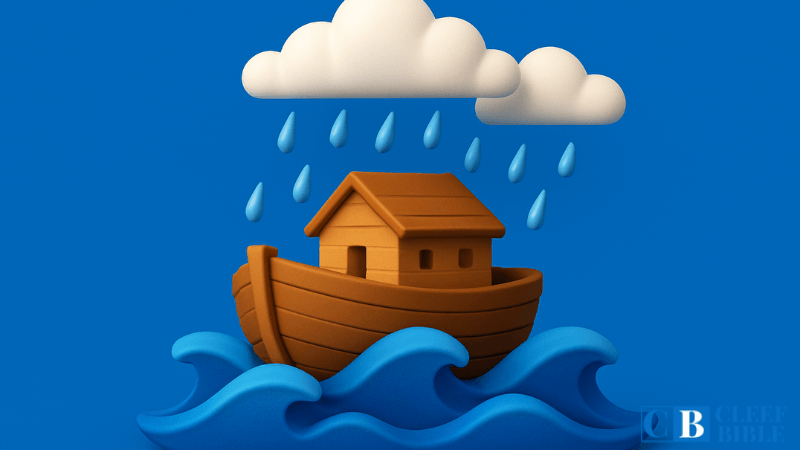


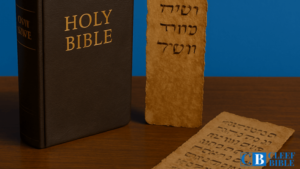
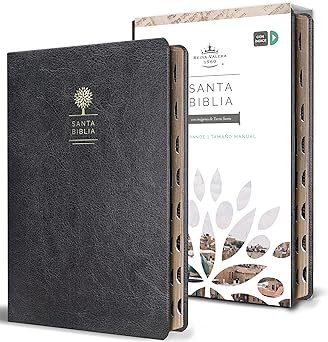








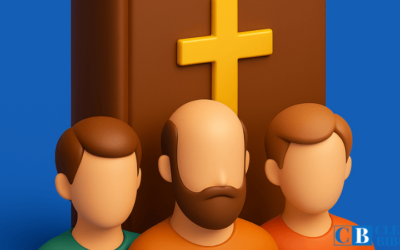
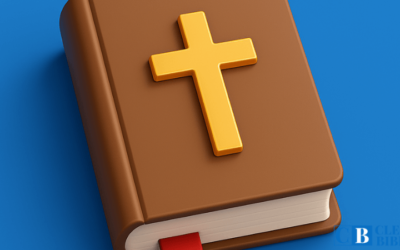


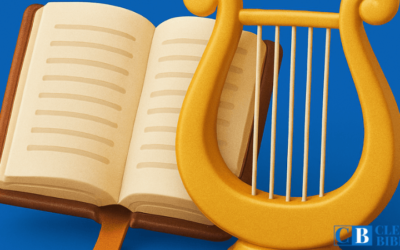

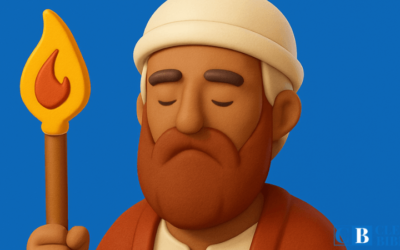



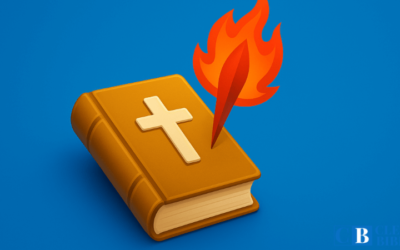
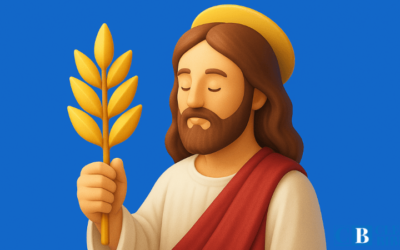
0 Comments